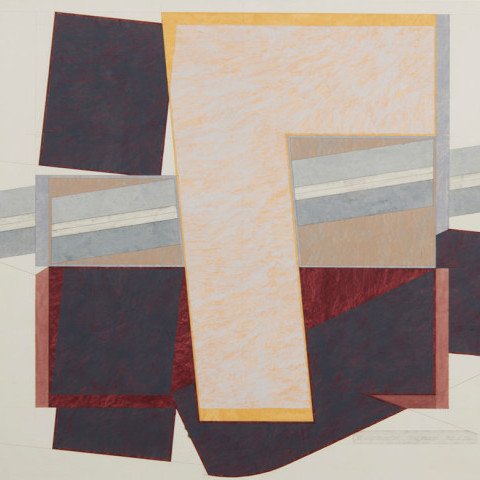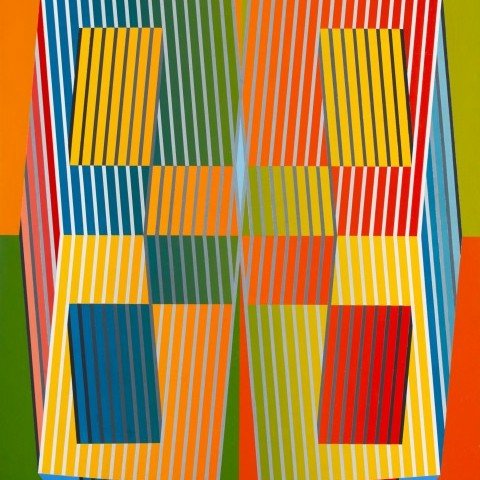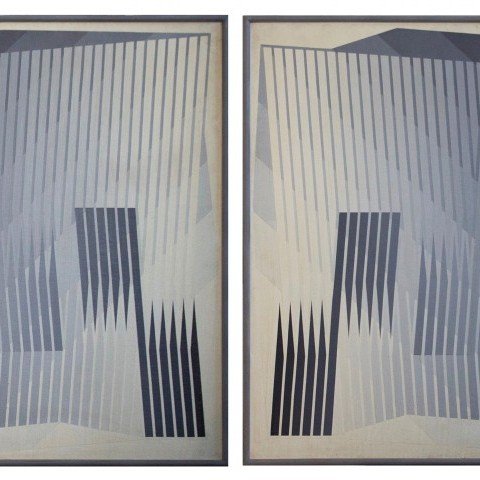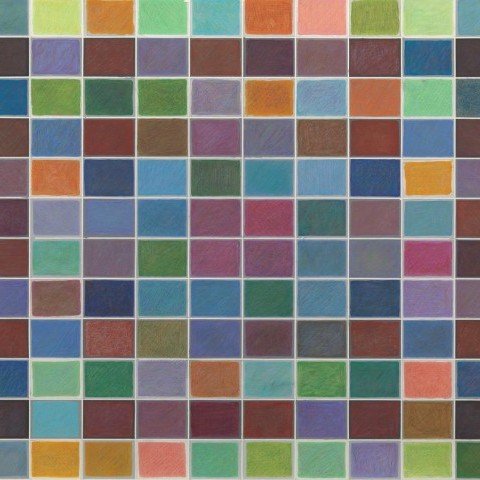Edwin Mieczkowski, born in Pittsburgh, was a leader of geometric and perceptual abstraction during the latter part of the 20th century. Mieczkowski's work first came to prominence in "The Responsive Eye" exhibition, the nation's first major exhibition of perceptual art, held at the Museum of Modern Art in New York in 1965.
Mieczkowski was also featured in the 1964 article in Timemagazine that first used the term "Op Art" to describe paintings that manipulated visual cues in order to reorder and excite viewers' perceptual responses.
With a complex aesthetic that over time has transcended mere tricks of optical art, Mieczkowski has spent nearly four decades producing geometrically paintings, drawings and sculptures, a genre of modern art that is known broadly as perceptual abstraction.
His output of static and dynamic forms create a body of work, still largely intact, that uses visually disorienting, meticulously arranged lines, dazzling kaleidoscopic colors, and alluring juxtapositions of hue and tone, to playfully and seductively present new challenges for the viewer's eyes. The desired result is an optical effect of perpetual motion, harmonics and rhythm. . . .
Along with Frank Hewitt and Ernst Benkert, Mieczkowski was a co-founder in 1959 of the Anonima* group that worked together in Cleveland and New York and declared itself free from the pressures of the art market and the pursuit of personal fame. Members of Anonima often left their works unsigned and vowed to shun the usual art market venues such as commercial galleries, biennials and competitions. Instead, they engaged in a rigorous, self-imposed program of painting exercises to explore the effects of geometry and color on visual perception.
Although Mieczkowski's work hung side-by-side in the MOMA "Responsive Eye" exhibition with such colleagues as Josef Albers, Victor Vasarely, Richard Anuszkiewicz, Morris Louis, Kenneth Noland, Carlos Cruz-Diaz, Ad Reinhardt and Bridget Riley, all of whom went on to considerable fame and fortune, Mieczkowski chose to eschew commercial exhibition and career promotion. Instead, he spent 39 years teaching at the Cleveland Institute of Art and quietly executing a number of public art commissions while independently pursuing his own intuitive explorations in geometric abstraction.
Mieczkowski pursued virtually no commercial sales of his work. Consequently, the body of work he left behind consists of hundreds of paintings, drawings and sculptures only recently viewed by the public.
Throughout his entire career, which he has continued from his studio in California, Mieczkowski has done artwork in evolving styles and mediums, which actively embrace of the logic and rationality of science and technology central to the era of which he was a part. Some of his most lyrical abstractions are inspired by cutting-edge science and, in particular, biomedicine, biotechnology and genetic research. During the more expressly geometric phases of his career, he was described as having "embraced the ruler and the compass as proper and delicate tools to be employed in the name of art." . . . A testament to the notion that vision does not take place automatically as though the revealing of a scene through a window but must be inferred from visual cues, Mieczkowski's oeuvre can be thought of as a precursor of aspects of post-modernism.
In 2004, Mieczkowski's entire life's oeuvre came close to being destroyed as he lay in a hospital bed recovering from heart surgery. Mieczkowski had been in the process of planning his relocation from Cleveland to Huntington Beach, California, when he was rushed to Houston for surgery. He had already sold his studio building but had not yet removed his art; and as he lay in Houston recovering from his second aortic aneurysm, the new owners of the building scheduled it for demolition despite its being filled with Mieczkowski's life work. Friends and art patrons literally rescued the art works, removing them from the building the night before it was to be demolished.
Mieczkowski received his BFA from the Cleveland Institute of Art in 1957 and his MFA from Carnegie Mellon in 1959.
Museums with Mieczkowski's work in their collections include the Museum of Contemporary Art in Lodz, Poland; the Tel Aviv Museum of Modern Art in Israel; the Louisiana Museum of Modern Art in Denmark; the Cleveland Museum of Art; the Akron Art Museum; and the New Jersey State Museum in Trenton. His most prominent public art commissions are in the Cleveland Public Library and the Health Sciences Library of Case Western Reserve University.




